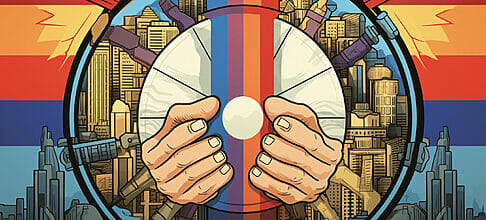Career Portfolio Basics
Are you navigating the job market? A career portfolio might be your secret weapon. This comprehensive showcase of your accomplishments and skills can give you an edge over the competition.
This article will explore the basics of creating a career portfolio. We’ll discuss selecting a format, deciding what to include, organizing your achievements, updating it, and using it to land your dream job.
You’re about to step up your job-hunting game!
Table of Contents
Selecting the Format for Your Professional Collection

When selecting the format for your professional collection, it’s crucial to remember your industry and audience. You wouldn’t present a digital portfolio to a traditional publishing house, just as you wouldn’t hand a leather-bound book to a tech startup. Understand what’s expected in your field and tailor your portfolio accordingly.
Consider whether a digital format, physical binder, or combination will best showcase your skills and achievements. For instance, a digital portfolio might be more appealing if you’re in design or photography since it can display your work vividly and dynamically. On the other hand, if you’re in a more traditional field like teaching or banking, a physical binder may be more appropriate.
Choose the format that best highlights your work and caters to your audience’s preferences.
Deciding What to Include
Deciding what to include can be tricky, but it’s essential to consider only those items that highlight your skills, achievements, and experiences. Don’t just throw in everything you’ve worked on – be selective. Your portfolio should showcase the best of what you can do.
Start by including your resume, a cover letter tailored to your industry, and letters of recommendation. Then, add samples of your best work. Depending on your field, these could be reports, presentations, or design projects.
If you’ve got certifications or completed relevant coursework, include those too.
Remember, the goal is to give potential employers a clear picture of your abilities. With careful selection, you can create a career portfolio that highlights your unique skills and experiences.
Organizing Your Achievements and Skills

You’ll find that adequately organizing your achievements and skills can significantly affect how effectively your portfolio communicates your capabilities. Think of it as telling your professional story; you need to structure the narrative so it’s compelling and easy to follow.
Start by categorizing your achievements and skills based on relevance. Which ones are core to your chosen field? Group them.
Next, consider how they chronologically fall into your career timeline. Did you gain an essential skill early on that influenced your later achievements? Highlight this progression.
Remember, your portfolio isn’t a dump of everything you’ve done. It’s a curated showcase of your best work. So, be selective, be strategic, and most importantly, be organized.
Keeping Your Collection Updated
Keeping your achievements and skills updated is crucial in showcasing your growth and development. As you progress in your career, you’ll gain new experiences, learn new skills, and achieve new milestones. It’s vital to document these, so they’re not forgotten.
Updating your career portfolio isn’t just about adding new entries. It’s also about removing outdated or irrelevant information. If a piece of information doesn’t add value or reflect your current abilities, it might be best to remove it.
Remember, quality trumps quantity.
Regularly reviewing and updating your portfolio keeps it current and helps you reflect on your career journey. It’s a great way to witness your growth, identify areas for improvement, and plan your career progression. Just remember, your career portfolio is a living, evolving document.
Using Your Professional Collection to Land a Job

Leveraging your professional collection effectively can significantly increase your chances of landing your dream job. This portfolio should ideally showcase your skills, experiences, and achievements clearly and concisely.
When applying for a job, tailor your portfolio to the job description. Highlight those projects or accomplishments that align with the company’s requirements. This not only shows you’re qualified but also that you’re proactive in understanding their needs.
During interviews, use your portfolio to back up claims about your abilities. Point out specific examples that demonstrate you’re the right fit.
Remember, your portfolio isn’t just a glorified resume. When used strategically, it’s a powerful tool that can set you apart from other candidates and help you secure your dream job.
Frequently Asked Questions
What is a career portfolio?
A career portfolio is a collection of examples of your work, such as projects, assignments, or achievements, that showcase your skills, experience, and accomplishments.
What should I include in my career portfolio?
You should include work samples, work experience, professional development activities, testimonials, and contact information in your career portfolio.
Should I include my LinkedIn profile in my career portfolio?
Including your LinkedIn profile in your career portfolio is a great idea. It provides additional information about your professional background and allows potential employers to learn more about you.
How can I make my portfolio stand out?
To make your portfolio stand out, you can focus on highlighting your best work, organizing it visually appealingly, including a professional-looking table of contents, and ensuring that the overall design of your portfolio looks polished and well-presented.
Do I need a portfolio if I’m not a graphic designer?
While a portfolio may be more commonly associated with creative professions like graphic design, it is beneficial for anyone who wants to showcase examples of their work to potential employers. Whether you’re a writer, programmer, or marketer, having a portfolio can help demonstrate your skills and expertise.
Should I include examples of my work unrelated to the job I’m applying for?
Including samples of your work relevant to the job you’re applying for is generally recommended. However, if you have done exceptional work in other areas demonstrating your skills and abilities, you can still consider including them in your portfolio.
Can I create a portfolio in PDF format?
Yes, creating a career portfolio in PDF format is a common practice. PDFs are easily shareable and can be formatted to maintain your portfolio’s intended design and layout.
Do I want to include soft skills in my portfolio?
While technical skills and work samples are often the main focus of a career portfolio, including soft skills can be beneficial. Soft skills are transferable and can give potential employers a sense of your interpersonal skills and how you may fit into their team or organization.
Are there any website builders that can help me create my portfolio?
Yes, there are numerous website builders available that can help you create a professional-looking portfolio. Also include WordPress, Wix, Squarespace, and Weebly.
What is a career portfolio?
A career portfolio is a documented collection of your best work, accomplishments, and professional experiences. It often showcases your skills, qualifications, and achievements to potential employers or clients.
Why is it essential to have a career portfolio?
A career portfolio is crucial because it allows you to present concrete evidence of your skills and achievements. It provides a comprehensive view of your work and helps demonstrate your capabilities to employers or clients.
What should I include in my career portfolio?
You should include various elements in your career portfolio, such as work samples, professional accomplishments, employment history, educational background, references, and career goals. Tailoring your portfolio to showcase your strengths and align with your career objectives is essential.
How do I make a portfolio that stands out?
To make a portfolio that stands out, you can incorporate elements such as a visually appealing design, well-organized table of contents, concise descriptions of your work, and references from respected professionals in your field. Additionally, including diverse and high-quality work samples can help make your portfolio more impressive.
Do I need a portfolio even if I’m not in a creative field like graphic design?
Yes, having a portfolio is beneficial even if you’re not in a creative field. Your portfolio can showcase your professional accomplishments, projects you’ve completed, and the impact you’ve made in your previous roles. It provides tangible evidence of your capabilities and adds credibility to your application.
What if I don’t have a lot of work samples to include in my portfolio?
If you don’t have extensive work samples, feel free to include projects you’ve worked on during your studies, volunteer experiences, or personal projects. Focus on quality rather than quantity and highlight the skills and accomplishments relevant to your desired career path.
Should I include digital and physical copies of my work in my portfolio?
It depends on the nature of your work and your target audience. If you have digital work or work samples that are better represented online, it’s advisable to include digital copies. However, if you have physical pieces that showcase your skills more effectively, including them in your portfolio can be beneficial.
Do I need to use a specific template to create my career portfolio?
There is no specific template that you must use for creating a career portfolio. You can choose a template that aligns with your style and effectively highlights your work. Many online platforms offer portfolio templates, or you can design your unique layout.
Should I include professional references in my career portfolio?
Yes, including professional references in your career portfolio can enhance your credibility. Select individuals who can speak to your skills and work ethic, and obtain their permission before including their contact information.
How often should I update my career portfolio?
Updating your career portfolio regularly is essential to include your most current and relevant work. Aim to review and update your portfolio at least once a year or whenever you have completed significant projects or achieved notable milestones.
Conclusion
You’ve got the basics of creating a career portfolio down! Now, you may want to include these ideas to your work portfolio.
Keep it organized, update it, and confidently showcase it in your job applications and interviews.
Remember, this powerful tool can be your ticket to landing your dream job. So, make your career portfolio the best representation of your professional abilities!













